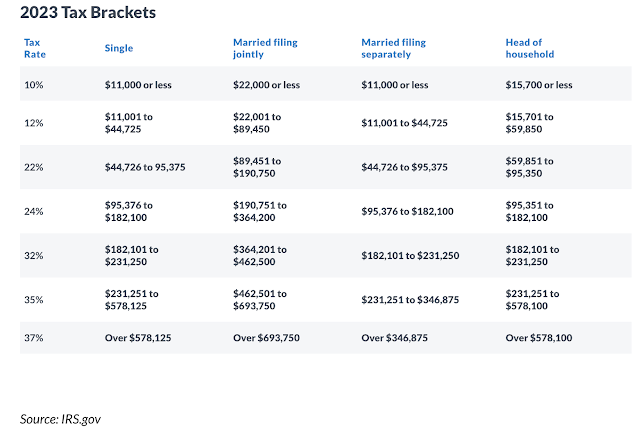As the clock ticks down to the final 12 days of 2023, don't miss out on the chance to play a little tax magic.
Before diving into the strategies, let's start with a crucial tip: get your tax-related documents in order now! Procrastinating until April could lead to unnecessary stress. Now, let's explore some savvy moves to make the most of the remaining days of the year.
1. Supercharge Your 401(k) Contributions
With only a handful of days left in 2023, the window for financial maneuvers is narrowing, but there's still time to perform some tax magic. One strategic move that can significantly impact your financial landscape is supercharging your 401(k) contributions.
As the year draws to a close, consider seizing the opportunity to boost your pretax 401(k) contributions. While the clock may be ticking, contributing to your 401(k) can work wonders for reducing your adjusted gross income and setting the stage for a more comfortable retirement.
For the current tax year, explore the possibility of maxing out your 401(k) contributions at $22,500, with an additional catch-up allowance of $7,500 for those aged 50 and older. This move is especially pivotal if you haven't yet tapped into the full benefits of employer matching funds or if you're looking to enjoy a reduction in taxable income.
Timing is key, and by adjusting your 401(k) plan deferrals now, you may see the impact before the year-end bonus arrives, simultaneously trimming your taxable earnings and bolstering your retirement savings.
In the post-Tax Cuts and Jobs Act era, the landscape of tax deductions has evolved, but there's still a clever strategy to maximize your deductions—enter the world of 'bunching.' Whether you're a seasoned philanthropist or a casual supporter of charitable causes, this tactic can work wonders.
Taxpayers now choose between the standard deduction and total itemized deductions, with the latter category encompassing charitable and medical expenses, state and local taxes, and more. With the standard deduction for 2023 set at $13,850 for single filers and $27,700 for married couples filing jointly, it's evident that many filers, even those with substantial means, are steering away from itemization.
However, 'bunching' charitable donations can be a game-changer, especially for those utilizing donor-advised funds. These funds offer an upfront deduction while acting as a charitable checkbook for future philanthropic endeavors.
3. Play Smart with Your Tax Bracket
Before making any moves that could impact your income, it's crucial to understand the intricacies of your current tax bracket. Elevating your income tax brackets requires careful consideration, and a tax projection is your strategic tool to gauge how much more income you can comfortably receive without catapulting into a higher bracket.
This becomes particularly significant when contemplating year-end partial Roth individual retirement account conversions or required minimum distributions from an inherited IRA. Knowing your tax bracket is the linchpin in deciding whether to defer income, such as a bonus or capital gains, into the following tax year.
4. Strategies That Extend Into the New Year
While most year-end tax planning concludes by December 31, there are a few strategies that can stretch into the new year. If cash is tight, consider these moves in early 2024:
- Pretax IRA Contributions: You can contribute up to $6,500 (or $7,500 if you're 50 and older) to a pretax IRA for 2023, potentially snagging a deduction. Verify your eligibility for IRA tax breaks before making contributions.
- Health Savings Account (HSA) Contributions: Contribute up to $3,850 (or $7,750 for family plans) to an HSA. HSAs offer a trifecta of tax benefits – upfront deduction, tax-free growth, and tax-free withdrawals for qualified medical expenses.
Interested in making informed trading and investing decisions?
• Explore our Stock Investor service for insightful investing strategies. • If you are looking for dynamic trading experiences, check out Basic+ | Swing Alert, Option Income Alert, or our Trading Room. Sign up today for as little as $1 in the first month.
Trading Risk Disclaimer
All the information shared is provided for educational purposes only. Any trades placed upon reliance of SharperTrades, LLC are taken at your own risk for your own account. Past performance is no guarantee. While there is great potential for reward trading stocks, cryptos, commodities, options, forex and other trading securities, there is also substantial risk of loss. All trading operations involve high risks of losing your entire investment. You must therefore decide your own suitability to trade. Trading results can never be guaranteed. SharperTrades, LLC is not registered as an investment adviser with any federal or state regulatory agency. This is not an offer to buy or sell stocks, cryptos, forex, futures, options, commodity interests or any other trading securities. Always consult your financial advisor and/or tax pro before making substantial portfolio adjustments.


